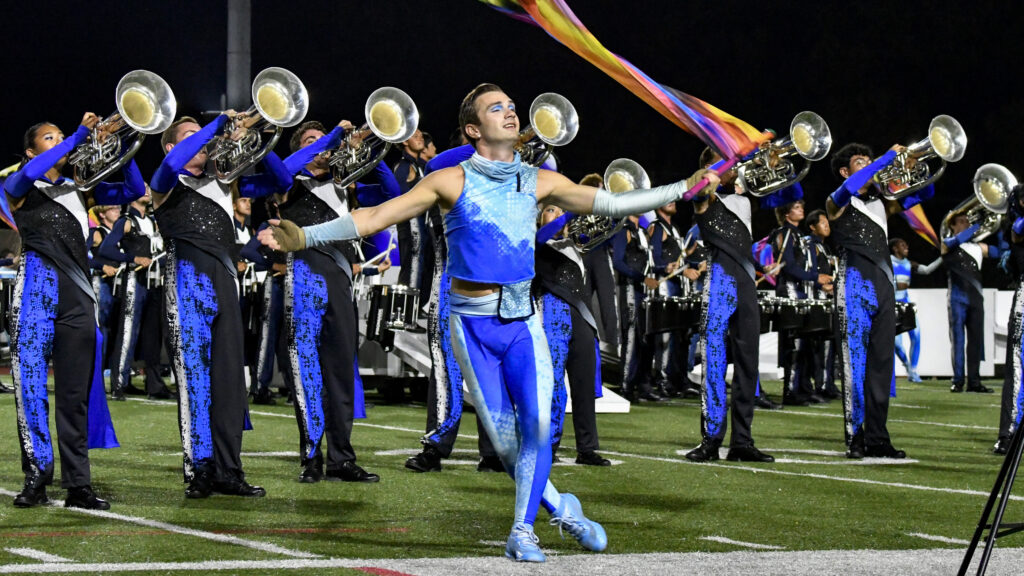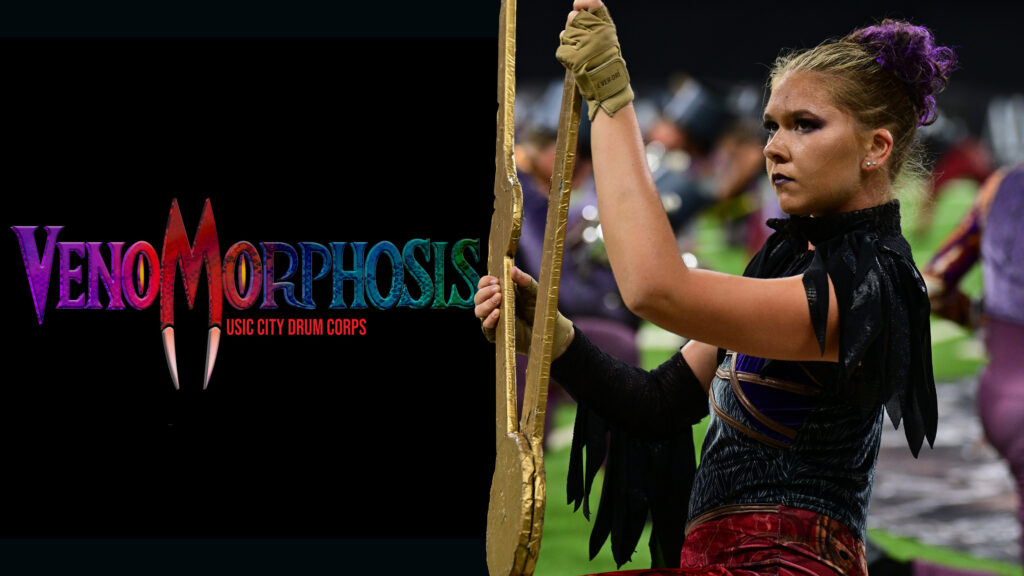From a Madison Scouts’ press release:
In all of drum corps there is no more identifiable sound than that of the Madison Scouts’ brass line. Bold, rich and powerful, the “Madison sound” is famous internationally for its unique character and immediacy. In fact, the Scouts have used their trademark sound to create a special bond with their audiences.
Notes Sal Salas, director, ” We’ve always said that our fans can pick us out blindfolded, because they know every detail of the music that makes our corps their favorite.”
While most listeners are amazed at the Scouts’ ability to deliver the “adrenaline rush” for which they are famous, it’s the subtleties of composition and performance that bring them respect in the musical community.
Dedicated to the growth of their performers, the brass staff for 2003 has taken the opportunity of the corps’ 65th anniversary to revitalize the writing and teaching in a manner consistent with their professional and academic backgrounds. With over 100 years of combined experience in the drum corps activity, this group brings a coordinated effort grounded in professional experience with symphony orchestras, broadway shows, university professorships and band director positions from Texas to Minnesota. With such depth and diversity, they should rightly be called a drum corps “faculty.”
Arranger Scott Boerma knows the components essential to the display of virtuosity expected from the Madison horn line. Since he assumed his position in 1989, this former marching member has created contemporary charts for this Midwestern powerhouse. Noted for his original compositions for winds, and his outdoor music for bands from Michigan to Japan, Boerma has mastered the aspects of lush harmonic development, extended soprano range, and small ensemble nuance that earmark his work as one of the most detailed and popular in the activity.
Joining him as co-caption head is Mark Waymire, a veteran music educator from Texas. Recipient of the president’s National Teacher Award and four National Teacher Hero Awards, Waymire’s work has brought major recognition to the Seguin, Texas, bands, for the extensive music and leadership programs offered there.
More than any single benchmark, it is the variety and versatility of the brass staff at Madison that sets it apart. Degrees from prestigious colleges and universities abound, but the commitment to professional achievement and great teaching is what identifies each member of the team.
Young arrangers like Andy Putnam forge their mettle with groups like the Eastman Brass Guild and the Armed Forces Massed Tuba and Euphonium ensemble, while long-time Madison stalwart Matt Gregg continues to conduct while arranging and playing professionally. Music educators like Jacob Garlinger and Jason Williams have used teaching at Madison to combine their symphonic wind backgrounds with their drum corps experience. Both Dave Newcomb and Todd Snead have performed with the national touring company of “Blast!” and, as concert trombonists, have been featured throughout the world. Dedicated to the Scout attributes of importance of discipline and self-confidence, Jon Schipper has chosen a performance career that includes commercial and film recording, while Steven Davis moves in the highest levels of young wind ensemble conductors, currently serving as associate director of bands at the University of Michigan.
With intriguing resumes and an articulated response to what makes great brass playing, this group assures each section of intense personal instruction. This season’s musical offering requires their combined efforts to deliver the unusual textures and timbres featured in the work. But, more importantly, every fan holds the expectation that the Madison brass will deliver the beauty, passion and intensity essential to memorable literature. For those who expect goose bumps with their great music, Waymire guarantees that from the first notes, every audience will agree “Now that’s Madison”!
Playing again on Dynasty brass instruments pitched in the key of G, this year’s brass will number 68 musicians: 20 sopranos, 16 mellophones, 15 baritones, five euphoniums and 12 contra basses.





